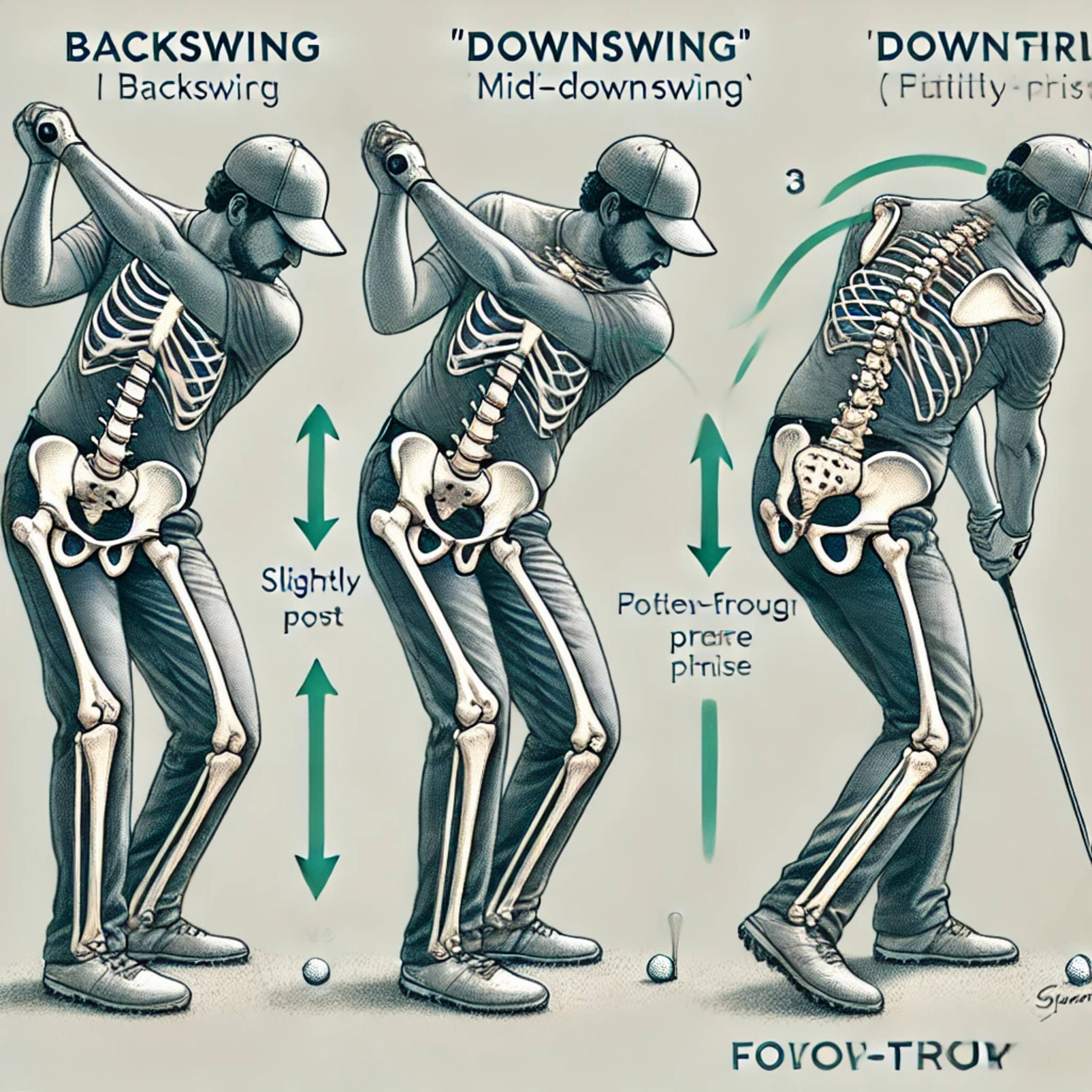#168 Golf Swing Pelvis Lift Analysis
- Author
- Golf247.eu
- Published
- Tue 18 Mar 2025
- Episode Link
- https://podcasters.spotify.com/pod/show/puttin-pro/episodes/168-Golf-Swing-Pelvis-Lift-Analysis-e30asbc
In a podcast excerpt from Golf Academy 360°, Henrik Jentsch explains the vertical movement of the pelvis during a golf swing, measured with the Sportsbox 3D Golf app. He defines the "Pelvis Lift" as the upward and downward movement between the hip joints, starting at zero in the address position. Using a diagram and data from tour professionals, he describes the typical motion: a pelvis drop during the backswing and early downswing, followed by a rapid rise before impact and subsequent stabilization.
This lifting of the pelvis, achieved by extending the front leg and hip, is highlighted as crucial for increasing clubhead speed and swing power. Most tour players display a similar downward and upward movement pattern.
The sources describe and analyze the general movement patterns of the pelvis during the golf swing, particularly the vertical motion known as the pelvis lift. This movement is defined as the upward and downward motion of a point in the pelvis between the left and right hip joints, measured relative to a zero position at address.
Typical Pelvis Movement Pattern During the Golf Swing:
Backswing: The pelvis remains relatively stable in the vertical direction at first. Later in the backswing, it begins to drop. The maximum pelvis drop actually occurs after the backswing ends, during the downswing. According to tour professional data, men and women experience an average pelvis drop of about 1 inch at the end of the backswing.
Downswing: The pelvis continues its downward movement initially. Then, in the middle of the downswing, it reaches its lowest point. Afterward, the pelvis rises rapidly. By the time of impact, the pelvis is typically higher than its starting height at address. For tour professionals, the average rise at impact is about half an inch for men and one-eighth of an inch for women. However, some players may not necessarily raise the pelvis above its starting height at impact.
Follow-through and Finish: The pelvis continues its upward movement after impact, reaching its peak during the follow-through. This upward motion, particularly through the extension of the front hip and leg area, is considered highly important for maximizing clubhead speed and swing power. In the finish position, the pelvis lowers again and stabilizes, potentially resting slightly lower than its peak height during the follow-through.
Conclusion:
The typical pelvis movement pattern among tour professionals can be described as a sequence of dropping (Drop), lifting (Lift), and stabilizing (Stabilize). The optimal movement pattern involves an early drop in the downswing and a lift before impact through the extension of the front leg and hip. Data from tour professionals confirms this drop-and-lift pelvis pattern.
In the context of the sources, the pelvis lift is defined as the vertical movement of a point in the pelvis between the left and right hip joints. This point is set to zero at address, and the pelvis lift is measured relative to that point, representing the vertical motion of the pelvis during the golf swing.
